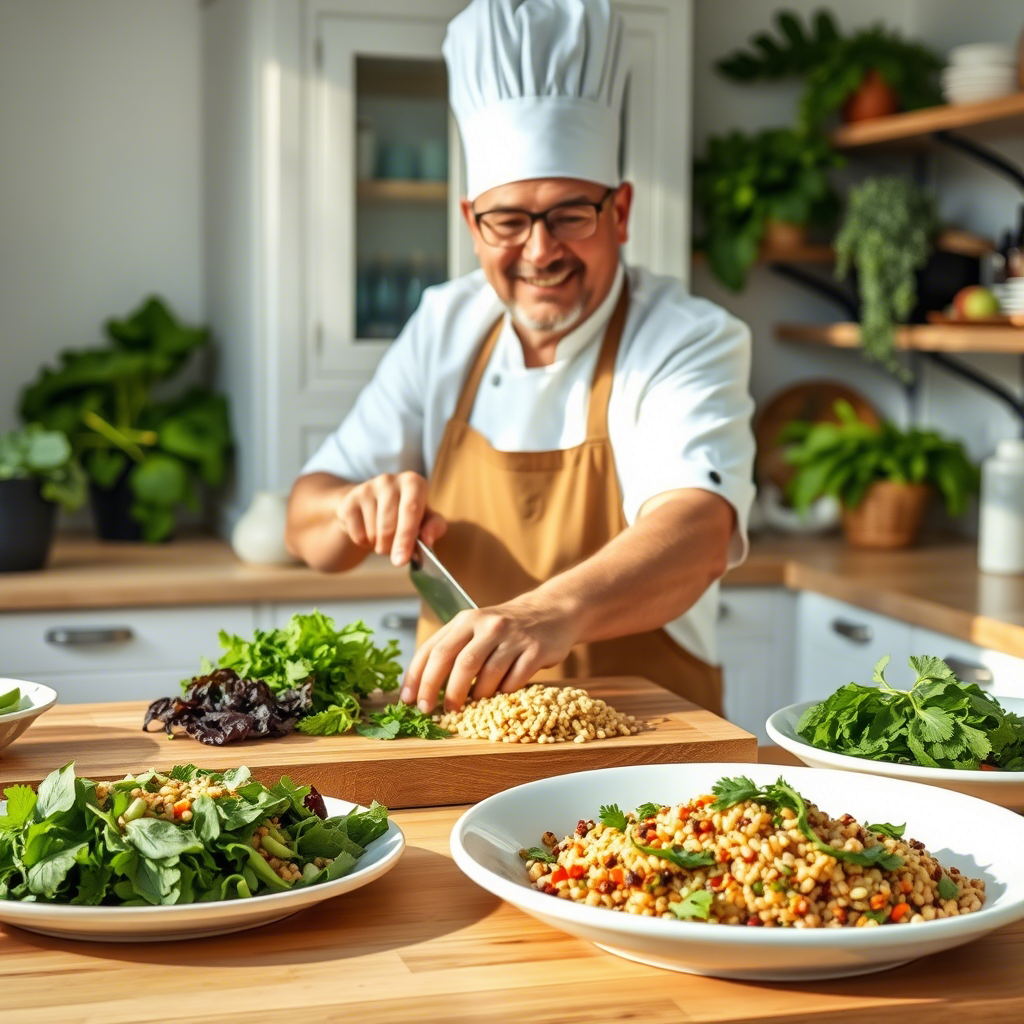Introduction
Why Healthy Recipes for Blue Zone Living Matter
Have you ever wondered why people in certain parts of the world live longer, healthier lives than the rest of us? What if their secret lies in Healthy Recipes for Blue Zone Living?
Blue Zones are special places where people regularly live to be 100 or older. These areas include Okinawa (Japan), Sardinia (Italy), Nicoya (Costa Rica), Ikaria (Greece), and Loma Linda (California). The food choices in these regions play a huge role in their amazing health and longevity.
Today, I’m sharing 7 easy, delicious Healthy Recipes for Blue Zone Living.These Healthy Recipes for Blue Zone Living aren’t just healthy—they’re packed with flavor and simple to make. Whether you’re new to healthy cooking or looking to add more life-extending meals to your routine, these recipes will help you eat like the world’s longest-living people.
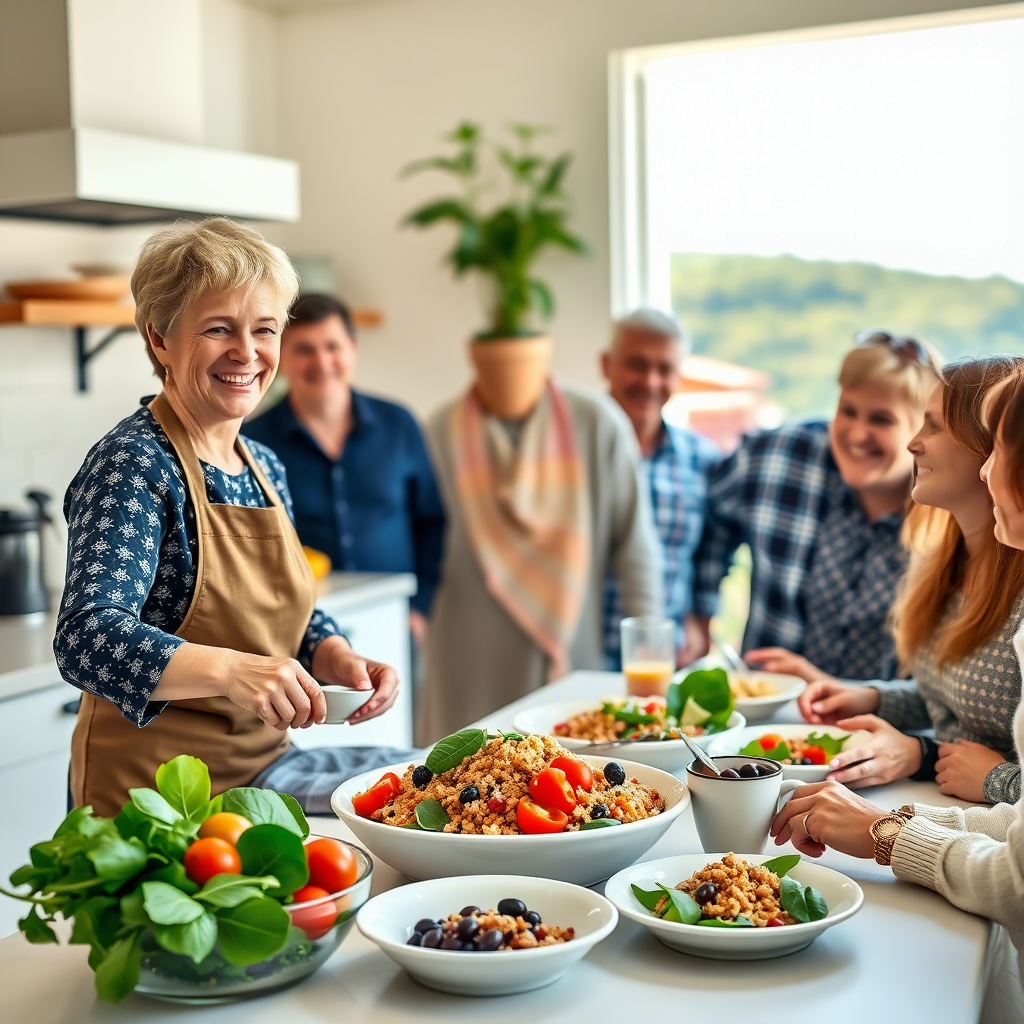
What Makes Healthy Recipes for Blue Zone Living Special
Healthy Recipes for Blue Zone Living isn’t about strict diets or fancy ingredients. It’s about simple, plant-based foods prepared with love. These Healthy Recipes for Blue Zone Living:
- Take 30 minutes or less to prepare
- Use everyday ingredients
- Range from beginner to intermediate difficulty
- Focus on plant foods (95% of the diet)
- Include small amounts of meat only occasionally
- Feature beans, whole grains, and vegetables as stars
Let’s dive into these life-extending recipes!ding recipes!
Recipe 1: Ikarian Longevity Stew

Overview
This hearty bean stew is one of the Healthy Recipes for Blue Zone Living from the Greek island of Ikaria, where people regularly live into their 90s and beyond. It takes about 45 minutes to prepare and is perfect for beginners who want to try Healthy Recipes for Blue Zone Living. The slow-cooked flavors develop beautifully, making this one of the most satisfying Healthy Recipes for Blue Zone Living.
Essential Ingredients
- 1 cup black-eyed peas (soaked overnight)
- 2 cups chopped kale
- 1 large onion, diced
- 3 garlic cloves, minced
- 2 carrots, chopped
- 2 stalks celery, chopped
- 1 can diced tomatoes
- 2 tablespoons olive oil
- 1 teaspoon dried oregano
- Salt and pepper to taste
Why these ingredients matter: Beans provide protein and fiber, while kale offers calcium and antioxidants. Olive oil delivers heart-healthy fats that Ikarians consume daily.
Substitutions: Any leafy green can replace kale. Navy beans or chickpeas work instead of black-eyed peas.
Step-by-Step Instructions
- Heat olive oil in a large pot over medium heat
- Add onions and cook until soft (about 5 minutes)
- Add garlic and cook for 30 seconds until fragrant
- Add carrots and celery, cooking for 3-4 minutes
- Pour in diced tomatoes with their juice
- Add drained black-eyed peas and 4 cups of water
- Bring to a boil, then reduce to a simmer
- Cook for 30 minutes until beans are tender
- Add kale and oregano, cooking for 5 more minutes
- Season with salt and pepper
Cooking tip: Don’t rush the simmering process—slow cooking develops the rich flavors that make this stew special.
Assembly
Serve this stew in deep bowls with a drizzle of olive oil on top. A slice of whole grain bread on the side makes it a complete meal. For an authentic touch, add a squeeze of lemon juice just before serving.
Storage and Make-Ahead Tips
This stew actually tastes better the next day! Store in airtight containers in the refrigerator for up to 4 days. It also freezes well for up to 3 months. Reheat gently on the stovetop with a splash of water if needed.
Recipe Variations
- Add a cup of diced sweet potatoes for extra sweetness and nutrition
- Stir in fresh herbs like parsley or dill before serving
- Include a pinch of red pepper flakes for a spicy kick
Recipe 2: Okinawan Sweet Potato Bowl
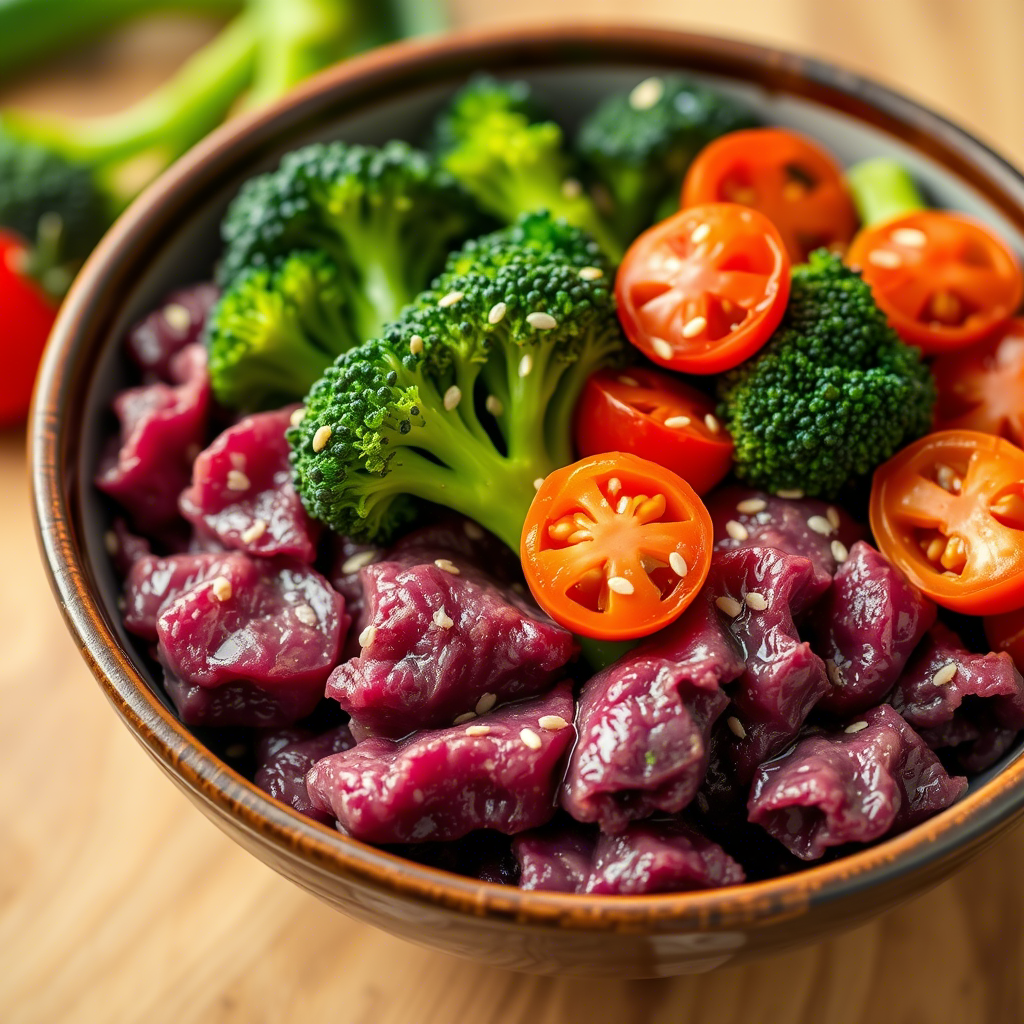
Overview
Sweet potatoes are a staple in Okinawa, Japan, where many residents live past 100. This colorful bowl is one of the easiest Healthy Recipes for Blue Zone Living and takes just 20 minutes to prepare. It’s a perfect lunch option and one of the most satisfying Healthy Recipes for Blue Zone Living.
Essential Ingredients
- 2 purple sweet potatoes (Okinawan if available)
- 1 cup cooked brown rice
- 1 cup edamame, shelled
- 1 avocado, sliced
- 2 tablespoons rice vinegar
- 1 tablespoon sesame oil
- 1 teaspoon soy sauce
- Sesame seeds for garnish
Why these ingredients matter: Purple sweet potatoes contain anthocyanins that fight inflammation. Brown rice provides fiber, while edamame offers plant protein.
Substitutions: Regular orange sweet potatoes work fine. Quinoa can replace brown rice for extra protein.
Step-by-Step Instructions
- Preheat oven to 400°F (200°C)
- Wash and cube sweet potatoes (no need to peel)
- Toss with a little olive oil and roast for 15-20 minutes until tender
- Meanwhile, cook edamame according to package directions
- Mix rice vinegar, sesame oil, and soy sauce to make a simple dressing
- Assemble bowls with rice on the bottom, topped with roasted sweet potatoes, edamame, and avocado slices
- Drizzle with dressing and sprinkle with sesame seeds
Cooking tip: Don’t overcook the sweet potatoes—they should be tender but still hold their shape.
Assembly
Create a colorful arrangement with the rice as a base, sweet potatoes on one side, edamame on another, and avocado slices fanned out. The visual appeal makes this simple dish feel special.
Storage and Make-Ahead Tips
Prepare components separately and store in the refrigerator for up to 3 days. Assemble just before eating. The dressing can be stored separately for up to a week.
Recipe Variations
- Add shredded nori (seaweed) on top for an authentic Japanese touch
- Include pickled ginger for a tangy flavor boost
- Top with a soft-boiled egg for extra protein (though this is less traditional)
Recipe 3: Sardinian Minestrone
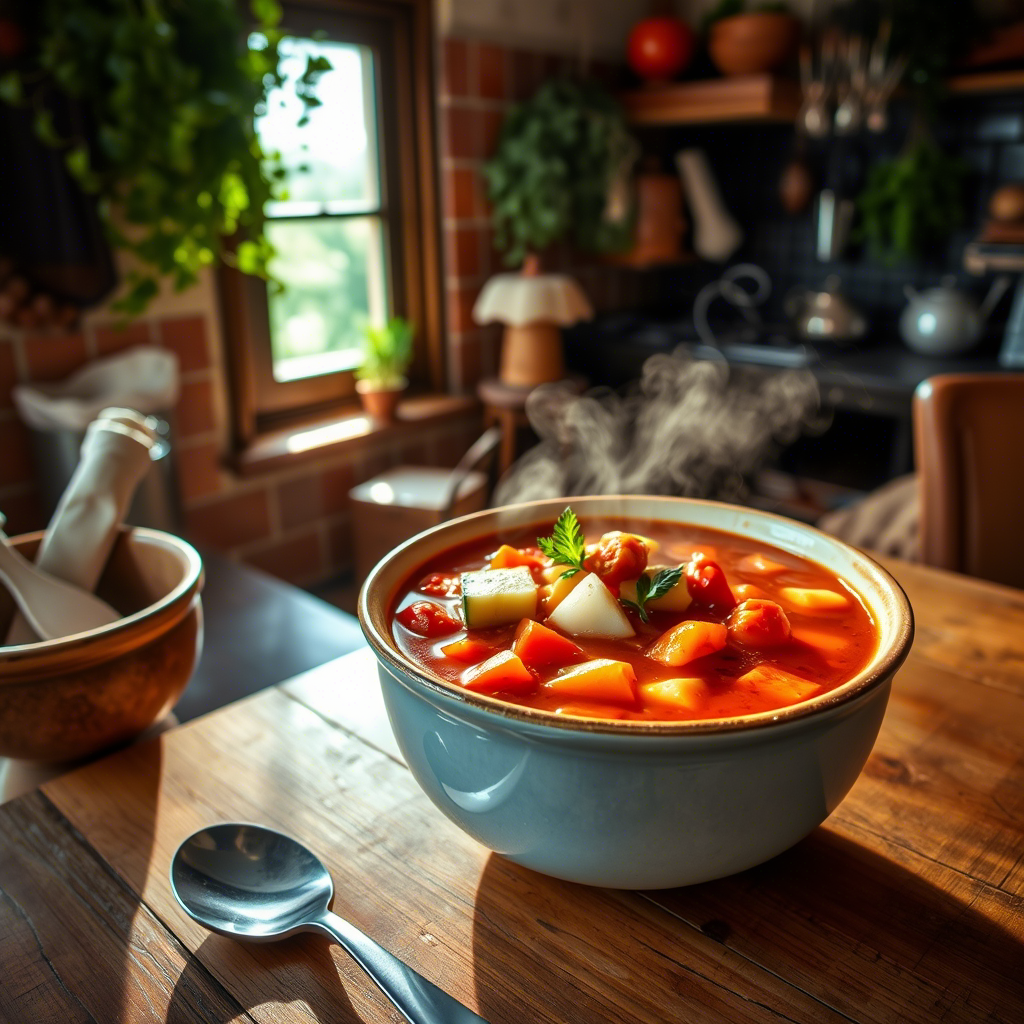
Overview
This hearty vegetable soup is one of the Healthy Recipes for Blue Zone Living in Sardinia, Italy, where many shepherds live into their 100s. It takes about 40 minutes to prepare and is suitable for all cooking levels, making it one of the most versatile Healthy Recipes for Blue Zone Living. This soup makes a perfect dinner, especially on cooler days.
Essential Ingredients
- 1 cup dried fava beans (soaked overnight)
- 1 cup fresh fennel, chopped
- 2 carrots, diced
- 1 onion, diced
- 2 celery stalks, chopped
- 2 potatoes, cubed
- 1 cup seasonal greens (kale, chard, or spinach)
- 2 tablespoons olive oil
- 1 teaspoon dried rosemary
- 6 cups vegetable broth
- Salt and pepper to taste
Why these ingredients matter: Fava beans provide protein and are a Sardinian staple. Fennel adds distinctive flavor and digestive benefits. The variety of vegetables creates a nutrient-dense meal.
Substitutions: Cannellini beans can replace fava beans. Any seasonal vegetables work well in this flexible recipe.
Step-by-Step Instructions
- Heat olive oil in a large pot over medium heat
- Add onions, carrots, celery, and fennel, cooking until soft (about 7 minutes)
- Add potatoes and drained fava beans
- Pour in vegetable broth and bring to a boil
- Reduce heat and simmer for 25 minutes until vegetables are tender
- Add greens and rosemary during the last 5 minutes
- Season with salt and pepper to taste
Cooking tip: For authentic Sardinian flavor, add a small piece of Pecorino cheese rind to the soup while it simmers (remove before serving).
Assembly
Serve in wide bowls with a drizzle of good olive oil on top. A slice of whole grain bread makes it a complete meal. Traditionally, Sardinians might add a small spoonful of fresh Pecorino cheese on top.
Storage and Make-Ahead Tips
This soup keeps well in the refrigerator for up to 5 days and actually improves with time. It can be frozen for up to 3 months. When reheating, you may need to add a little water as the beans tend to absorb liquid.
Recipe Variations
- Add a handful of fregola (Sardinian pasta) or barley for a heartier soup
- Include seasonal vegetables like zucchini in summer or pumpkin in fall
- For special occasions, Sardinians might add a small amount of sausage
Recipe 4: Nicoya Black Bean and Corn Salad

Overview
This vibrant salad is one of the Healthy Recipes for Blue Zone Living from the Nicoya Peninsula in Costa Rica, where residents enjoy remarkable longevity. It takes just 15 minutes to prepare and is perfect for beginners who want to try Healthy Recipes for Blue Zone Living. It works as a side dish or light lunch.
Essential Ingredients
- 2 cups cooked black beans
- 1 cup fresh corn kernels
- 1 red bell pepper, diced
- 1/2 red onion, finely chopped
- 1 avocado, cubed
- 1/4 cup cilantro, chopped
- Juice of 2 limes
- 2 tablespoons olive oil
- 1 teaspoon cumin
- Salt and pepper to taste
Why these ingredients matter: Black beans are a cornerstone of the Nicoya diet, providing protein and fiber. Fresh vegetables add vitamins and antioxidants, while lime juice aids digestion.
Substitutions: Canned black beans work fine (just rinse well). Frozen corn can replace fresh when out of season.
Step-by-Step Instructions
- If using fresh corn, boil corn cobs for 3 minutes, then cut kernels off
- Combine beans, corn, bell pepper, and red onion in a large bowl
- In a small bowl, whisk together lime juice, olive oil, cumin, salt, and pepper
- Pour dressing over the salad and toss gently
- Add avocado and cilantro just before serving, folding in carefully
Cooking tip: Let the salad sit for 15 minutes before serving to allow flavors to blend.
Assembly
Serve in a shallow bowl or platter to showcase the colorful ingredients. This salad looks beautiful when components are arranged in sections before tossing.
Storage and Make-Ahead Tips
This salad keeps well for 2 days in the refrigerator, though the avocado may brown slightly. For meal prep, prepare all ingredients except avocado and cilantro, adding those just before serving.
Recipe Variations
- Add diced mango for a sweet-savory combination
- Include cooked quinoa to make it a heartier main dish
- Spice it up with a diced jalapeño pepper
Recipe 5: Loma Linda Avocado Toast with Chickpea Spread
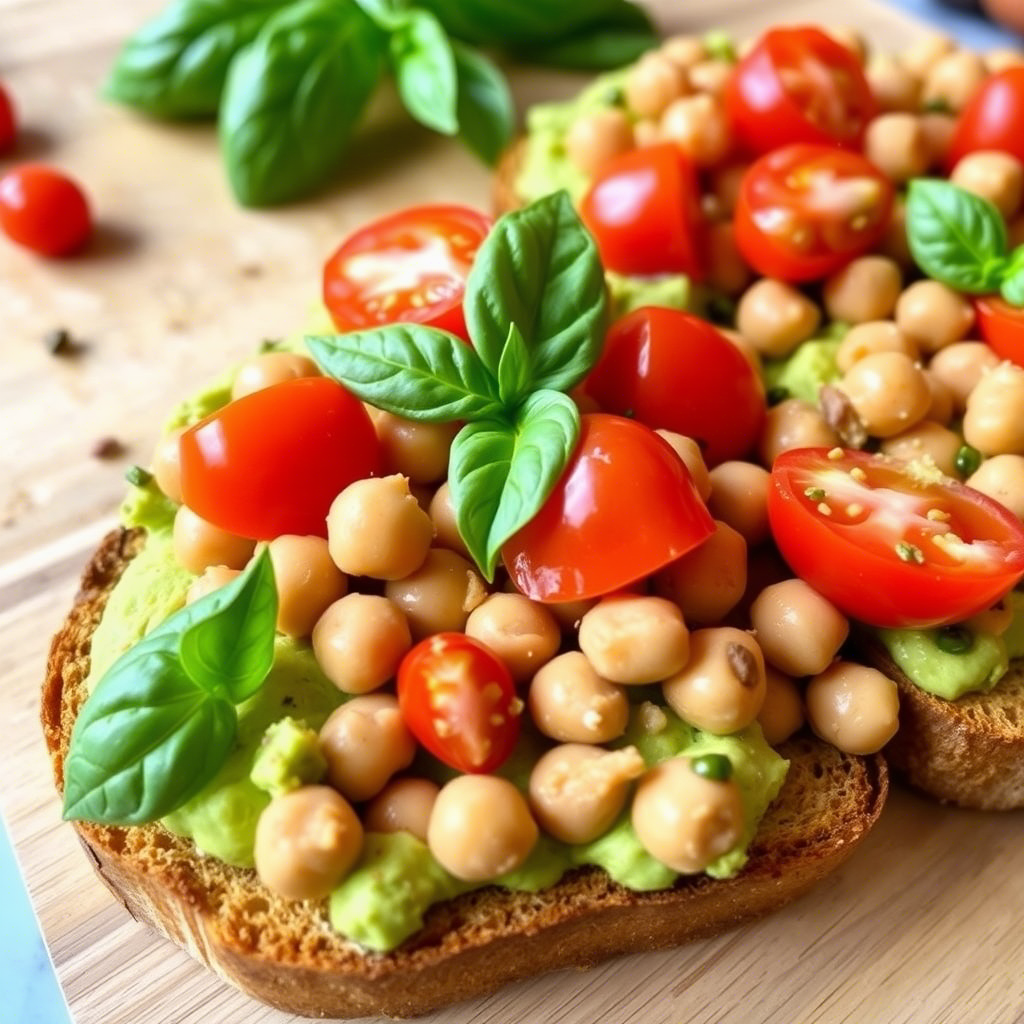
Overview
This plant-powered breakfast is one of the Healthy Recipes for Blue Zone Living from Loma Linda, California, where the Seventh-day Adventist community enjoys exceptional longevity. It takes just 10 minutes to prepare and is perfect for beginners. It makes an ideal breakfast or snack.
Essential Ingredients
- 2 slices whole grain bread
- 1 ripe avocado
- 1 cup cooked chickpeas
- 1 tablespoon lemon juice
- 1 tablespoon olive oil
- 1 clove garlic, minced
- 1/4 teaspoon cumin
- Pinch of salt
- Red pepper flakes (optional)
Why these ingredients matter: Whole grains provide fiber and sustained energy. Avocados deliver healthy fats, while chickpeas add protein and additional fiber.
Substitutions: Any whole grain bread works well. White beans can replace chickpeas for a different flavor.
Step-by-Step Instructions
- In a food processor, combine chickpeas, lemon juice, olive oil, garlic, cumin, and salt
- Pulse until smooth but still slightly textured
- Toast bread slices until golden
- Spread chickpea mixture on toast
- Slice avocado and arrange on top
- Sprinkle with a pinch of salt and red pepper flakes if desired
Cooking tip: For extra flavor, rub a cut garlic clove on the toast before adding toppings.
Assembly
Layer the chickpea spread first, then fan out avocado slices on top. A sprinkle of microgreens or sprouts adds color and nutrition.
Storage and Make-Ahead Tips
The chickpea spread can be made ahead and stored in the refrigerator for up to 5 days. Assemble the toast just before eating to prevent sogginess.
Recipe Variations
- Add sliced tomatoes and fresh basil for an Italian twist
- Top with roasted red peppers and a sprinkle of nutritional yeast
- Include thinly sliced radishes for crunch and color
Recipe 6: Mediterranean Lentil and Vegetable Bowl
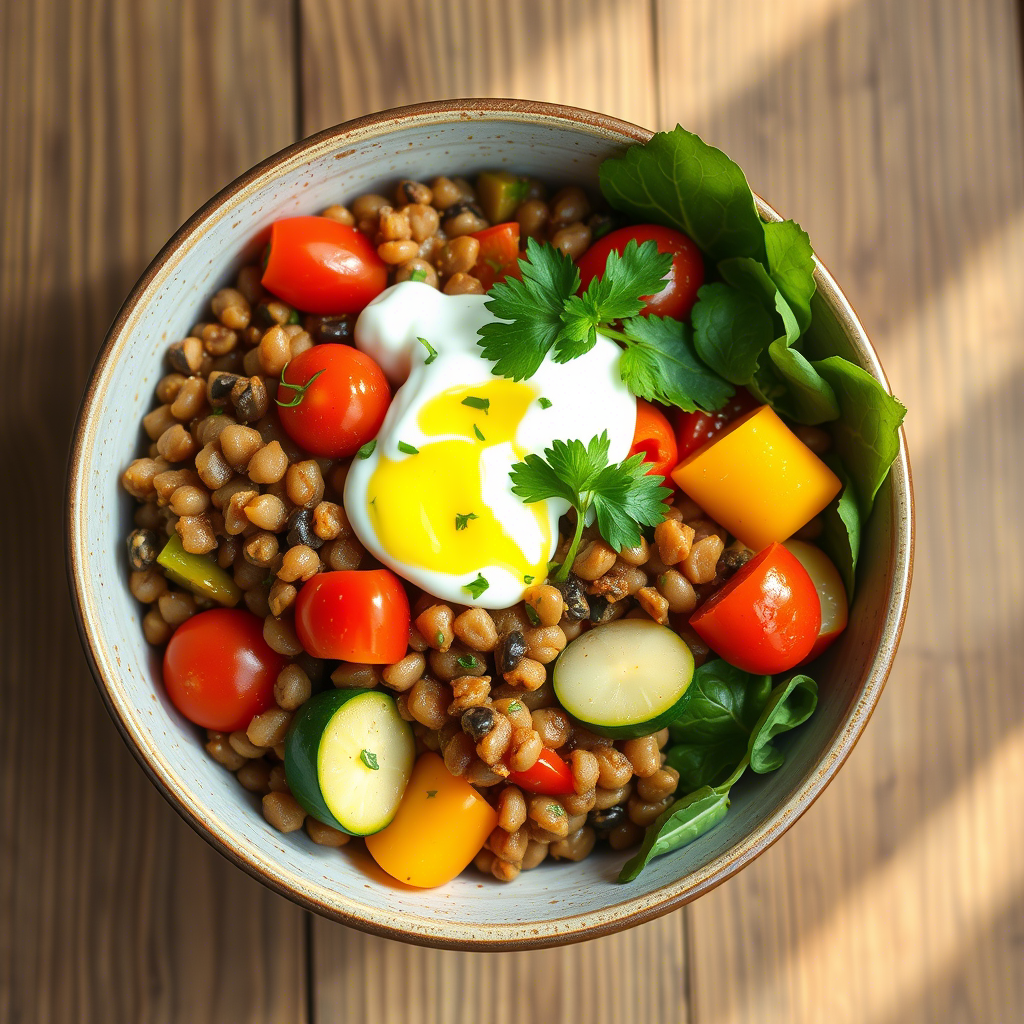
Overview
This protein-rich bowl incorporates elements from several Blue Zones in the Mediterranean region. It takes about 30 minutes to prepare and is suitable for intermediate cooks. It makes a satisfying lunch or dinner.
Essential Ingredients
- 1 cup green or brown lentils
- 2 cups mixed roasted vegetables (zucchini, eggplant, bell peppers)
- 1 cup cherry tomatoes, halved
- 1/4 cup olives, pitted and halved
- 2 tablespoons olive oil
- 1 tablespoon lemon juice
- 1 teaspoon dried oregano
- 1/4 cup fresh parsley, chopped
- Salt and pepper to taste
Why these ingredients matter: Lentils are a Blue Zone protein staple, providing fiber and nutrients. The variety of vegetables delivers a wide range of antioxidants and vitamins.
Substitutions: Any color lentils work well. Use whatever seasonal vegetables you have available.
Step-by-Step Instructions
- Rinse lentils and place in a pot with 3 cups of water
- Bring to a boil, then reduce heat and simmer for 20-25 minutes until tender
- Meanwhile, cut vegetables into bite-sized pieces
- Toss with 1 tablespoon olive oil, salt, and pepper
- Roast at 425°F (220°C) for 20 minutes, stirring halfway
- Drain lentils and toss with 1 tablespoon olive oil, lemon juice, and oregano
- Combine lentils, roasted vegetables, cherry tomatoes, and olives
- Garnish with fresh parsley
Cooking tip: Don’t overcook the lentils—they should be tender but still hold their shape.
Assembly
Create a beautiful bowl by placing lentils on the bottom and arranging vegetables, tomatoes, and olives in sections on top. Finish with a drizzle of olive oil and fresh herbs.
Storage and Make-Ahead Tips
Components can be stored separately in the refrigerator for up to 4 days. This makes an excellent meal prep option—just combine ingredients when ready to eat.
Recipe Variations
- Add a dollop of Greek yogurt for creaminess
- Include a sprinkle of feta cheese (used sparingly in Blue Zones)
- Serve over a bed of greens for extra vegetables
Recipe 7: Blue Zone Berry and Nut Breakfast Bowl
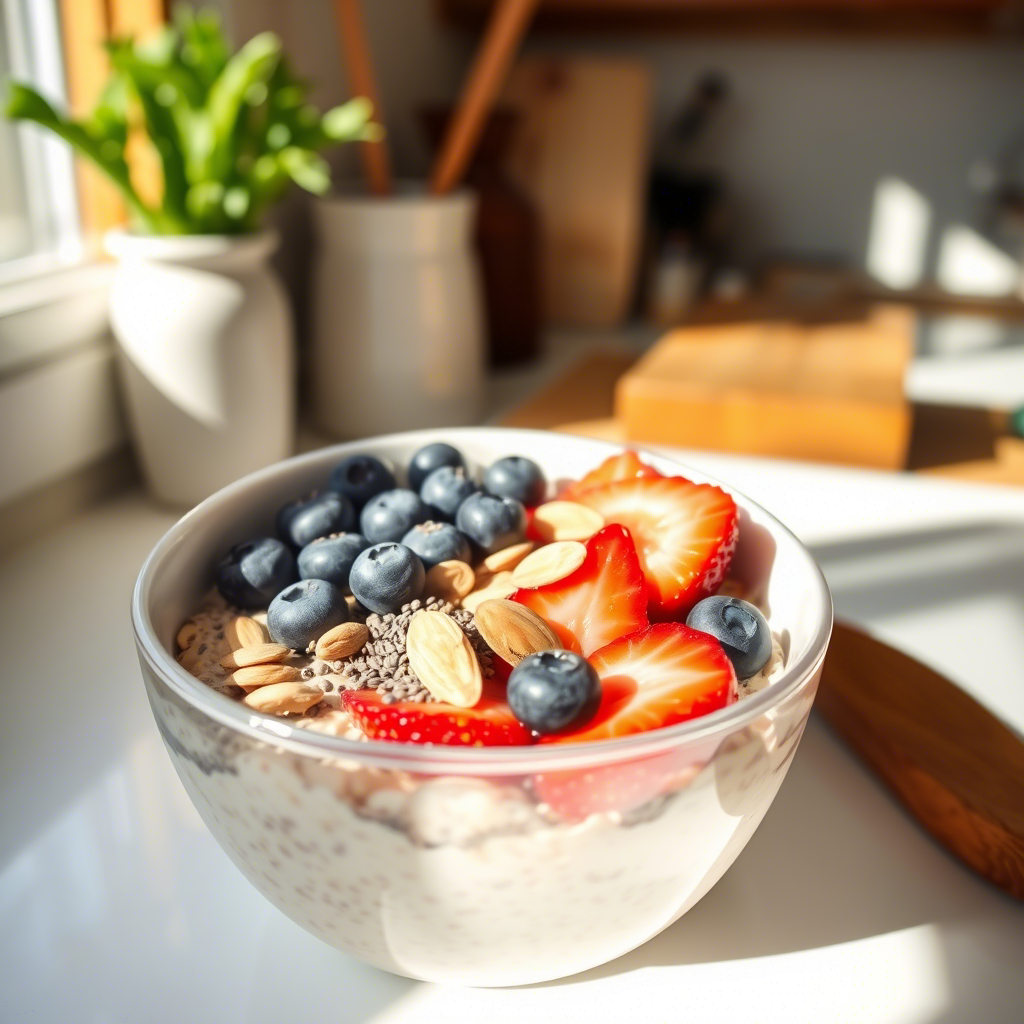
Overview
This nutrient-dense breakfast incorporates elements from all Blue Zones, where nuts and berries are consumed regularly. It takes just 5 minutes to prepare and is perfect for beginners. It’s an ideal way to start your day with Blue Zone principles.
Essential Ingredients
- 1/2 cup rolled oats
- 1 tablespoon ground flaxseed
- 1 tablespoon chia seeds
- 1 cup plant milk (almond, soy, or oat)
- 1/2 cup mixed berries (blueberries, strawberries, raspberries)
- 1 tablespoon walnuts, chopped
- 1 tablespoon almonds, sliced
- 1 teaspoon honey or maple syrup (optional)
Why these ingredients matter: Whole grains like oats are a Blue Zone breakfast staple. Nuts provide healthy fats and protein, while berries deliver antioxidants and natural sweetness.
Substitutions: Any berries work well, fresh or frozen. Different nuts can be used based on preference.
Step-by-Step Instructions
- Combine oats, flaxseed, chia seeds, and plant milk in a bowl
- Stir well and let sit for 5 minutes to thicken
- Top with berries, walnuts, and almonds
- Drizzle with a small amount of honey or maple syrup if desired
Cooking tip: For a warm version, heat the milk before adding to the oats. For overnight oats, prepare the night before and refrigerate.
Assembly
Create a beautiful breakfast bowl by arranging berries and nuts in an appealing pattern on top of the oats. A sprinkle of cinnamon adds flavor and visual appeal.
Storage and Make-Ahead Tips
Overnight oats can be prepared up to 3 days in advance and stored in the refrigerator. Add fresh berries and nuts just before serving.
Recipe Variations
- Add a tablespoon of nut butter for extra protein
- Include a sprinkle of cacao nibs for antioxidants
- Top with sliced banana for additional sweetness
Conclusion
These seven Blue Zone recipes offer more than just delicious meals—they provide a pathway to the eating habits of the world’s longest-living people. By incorporating these dishes into your regular rotation, you’ll naturally shift toward a more plant-based, nutrient-rich diet without feeling deprived.
The beauty of Blue Zone eating is its simplicity. These aren’t complicated recipes requiring special skills or ingredients—they’re everyday foods prepared with care. Start with one recipe that appeals to you, then gradually add others to your repertoire.
Remember that in Blue Zones, food is about more than nutrition—it’s about connection. Try sharing these meals with family and friends to capture the full Blue Zone experience. After all, the social aspects of eating are just as important as what’s on your plate.
Which Blue Zone recipe will you try first? Your journey to healthier, longer living starts in your kitchen today.
FAQs
Are Blue Zone recipes vegetarian?
Most Blue Zone meals are plant-based, though not strictly vegetarian. Animal products appear in small amounts as occasional additions rather than daily staples. Our recipes reflect this pattern, focusing on beans, vegetables, and whole grains.
How can I make these recipes if I’m short on time?
Many components can be prepared in advance. Cook a large batch of beans or lentils on weekends, roast vegetables ahead of time, and keep nuts and seeds on hand. With these basics ready, Blue Zone meals come together quickly.
Will these recipes help me lose weight?
While weight loss isn’t the primary goal of Blue Zone eating, many people find they naturally reach a healthy weight when following these principles. The high fiber content helps you feel full longer, and the emphasis on whole foods supports overall health.
Can children eat these Blue Zone recipes?
Absolutely! These nutrient-dense meals are perfect for growing bodies. You might need to adjust spices for younger palates, but introducing children to these healthy eating patterns early sets them up for lifelong health.
Where can I find unusual ingredients like Okinawan sweet potatoes?
Check Asian markets for specialty items like purple sweet potatoes. However, all recipes include common substitutions available at regular grocery stores. The essence of Blue Zone eating is using what’s local and available.
How strictly do I need to follow these recipes?
Blue Zone eating isn’t about perfection—it’s about patterns. Feel free to adapt these recipes based on your preferences and what’s available. The key principles are emphasizing plants, including beans regularly, and using whole foods.
Can I prepare these recipes for someone with dietary restrictions?
Most Blue Zone recipes are naturally free from common allergens like dairy and eggs. They’re easily adapted for gluten-free diets by substituting appropriate grains. The plant-focused nature makes them versatile for many dietary needs.
